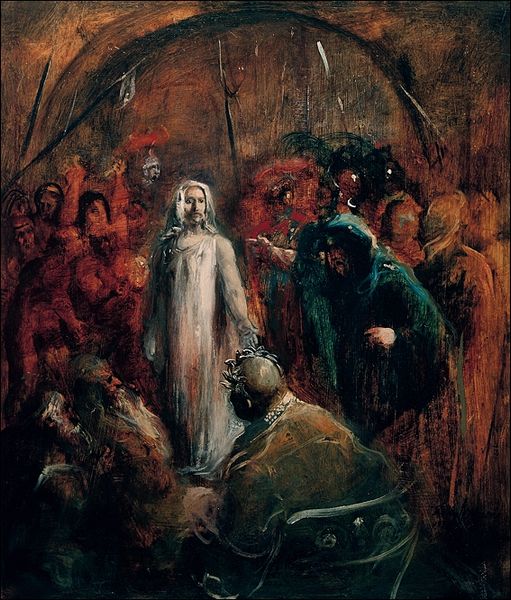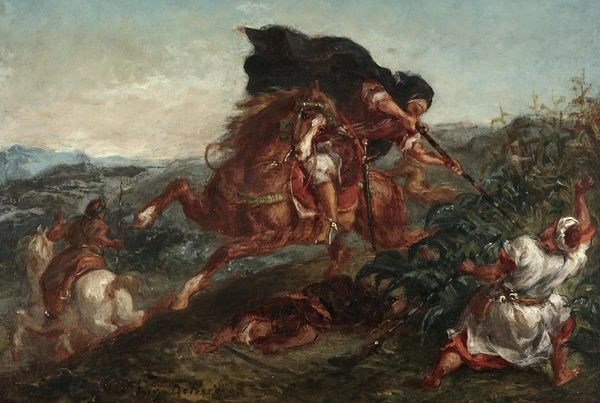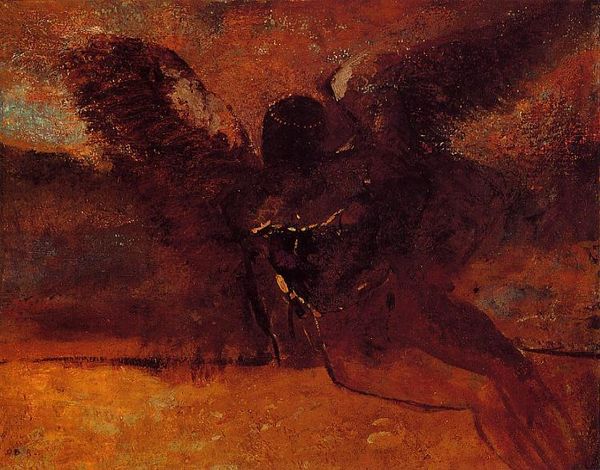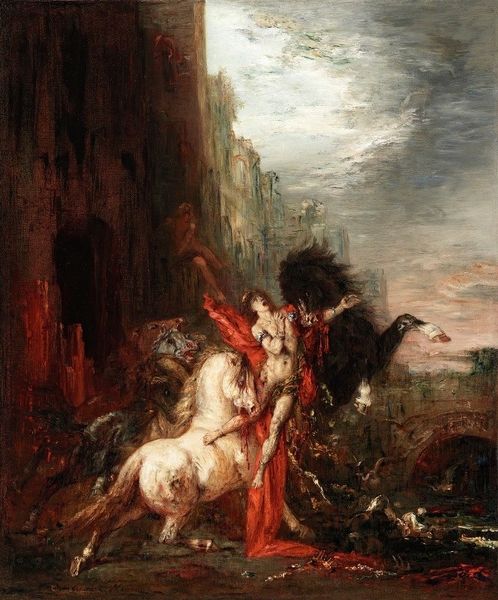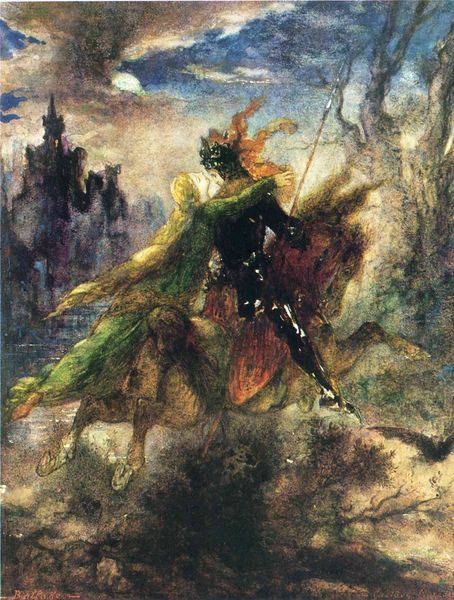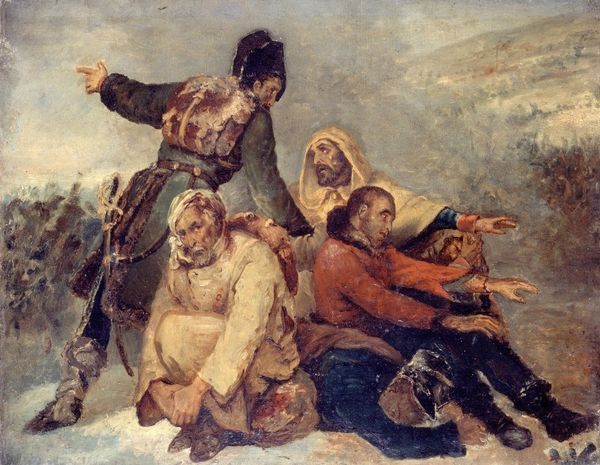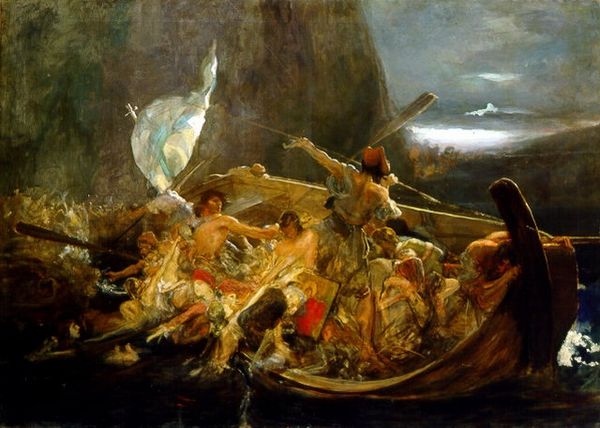
Copyright: Public domain
Editor: This is "Wild Chase," an oil painting by Franz von Stuck from 1889. It feels incredibly frantic and chaotic; the dark colors and blurry figures contribute to a sense of impending doom. How do you interpret this work within its historical context? Curator: Seeing “Wild Chase” today, we need to consider its late 19th-century origins, a time when history painting was becoming increasingly scrutinized and artists sought new ways to represent it. This isn't just about illustrating a historical event. Consider how anxieties around social change, industrialization, and, of course, war, found expression in Symbolist art. Look at the composition - doesn’t it feel almost like a nightmare unfolding before your eyes? The viewer is thrust into this relentless pursuit. Editor: Absolutely, it's less a depiction of a specific war, and more about the feeling of being caught in relentless destructive forces. Does this painting draw from specific socio-political events? Curator: It resonates with rising nationalist sentiment in Germany and beyond, a period punctuated by intense political maneuvering. The figure on horseback might symbolize a powerful force, perhaps even a warning about where unchecked power can lead. The terror on the faces of those being chased suggests that violence is visited on civilian populations. Does the image evoke a specific nation? Probably not. The faceless hordes of pursuers and pursued transcend the individual actors in any one historical event and become, instead, archetypes in this "wild chase." Editor: I see. It’s a really powerful commentary on the cyclical nature of violence and the vulnerability of individuals within broader socio-political conflicts. Thanks for sharing that insight! Curator: My pleasure! Thinking about how such pieces engage with our present-day fears and concerns allows us to perceive how society continually interacts with artworks.
Comments
No comments
Be the first to comment and join the conversation on the ultimate creative platform.
